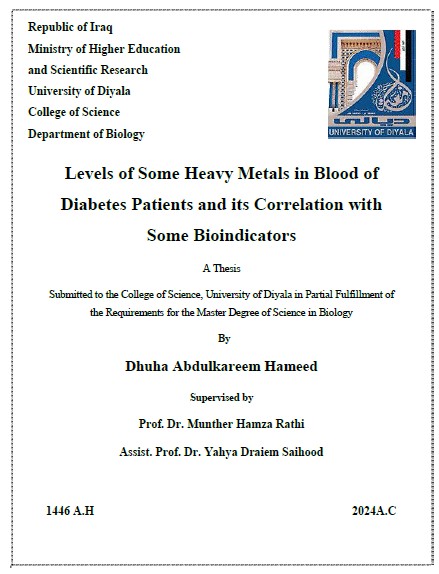Type 2 diabetes mellitus (T2DM) and heavy metal exposure are frequently linked with overlapping pathologies, with their risk increasing due to environmental and physiological factors. In T2DM patients, elevated levels of heavy metals such as lead (Pb), cadmium (Cd), and copper (Cu) have been associated with worsening metabolic complications and kidney dysfunction. These elements may influence the levels of urea and creatinine, critical markers of renal health, and are further impacted by age, weight, and overall metabolic status. Understanding these relationships is crucial for improving the management and prognosis of T2DM patients. This study aims to evaluate the association between the blood concentrations of lead (Pb), cadmium (Cd), and copper (Cu) in patients with type 2 diabetes mellitus (T2DM), compare these levels with healthy individuals, and assess the impact of age, weight, urea, and creatinine levels on these relationships.
A case-control study was conducted, including 118 participants divided into two main groups: the first group included 92 Patients diagnosed with T2DM, the second group includes 26 healthy individuals without diabetes.
Both groups were matched in terms of age and gender (age range: 30-65 years).
The results of the current study were summarized as the follow.
1. Levels of Heavy Metals:
– A significant increase (p<0.001) in blood lead (Pb) and cadmium (Cd) levels was observed in the T2DM group compared to the control group.
– Copper (Cu) levels were also notably higher in T2DM patients than in healthy individuals.
2. Association with Kidney Function (Urea and Creatinine):
– Urea and creatinine levels were significantly elevated in T2DM patients compared to the controls, reflecting the impact of diabetes on kidney function.
– A strong positive correlation was found between elevated lead and cadmium levels and deteriorated kidney function (p<0.001).
3. Age and Weight:
– There was a positive relationship between age and increased concentrations of lead and cadmium in the blood of T2DM patients.
– Overweight and obesity were strongly associated with elevated copper levels in these patients.
4. Comparison Between Patients and Healthy Individuals:
– Heavy metal levels in T2DM patients were higher than in the control group, suggesting a potential role of these metals in exacerbating diabetes complications.
5. Correlation Among Variables:
– Strong correlations were found between elevated lead and cadmium levels and increased urea and creatinine levels.
– Copper levels were significantly associated with higher body mass index (BMI) in T2DM patients.
The study concludes that elevated levels of lead and cadmium may serve as indicators of kidney dysfunction in T2DM patients. Copper levels appear to be linked to obesity in these patients. Monitoring these heavy metals could aid in the early detection and management of diabetes-related complications. Additionally, assessing heavy metal concentrations may provide valuable insights into improving diabetes management strategies.





